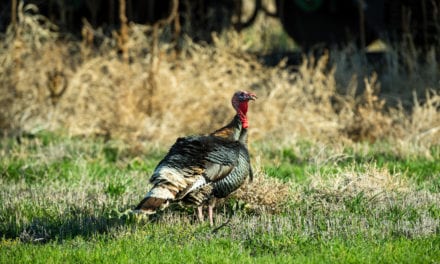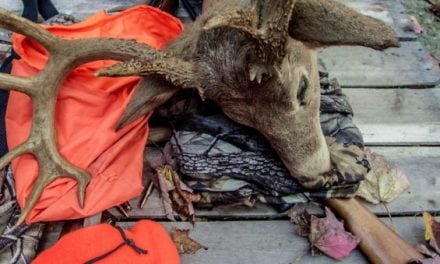Minnesota’s waterfowlers will be duck hunting for these five species, and we know why.
If there were just one kind of duck, I suspect we duck hunters wouldn’t be quite so excited about our pastime.
Sure, there still would be the splash of decoys as you throw out the blocks before first light. Stars twinkling above. The sweet smell of muck, water, duck dogs and cattails. The whisper and whoosh of wings overhead as the eastern sky lightens and dawn approaches. The blast of your duck call welcoming a new day and inviting winged visitors to set those wings and bank into your setup as you wait with wide eyes, beating heart and trembling hands.
But for a duck hunter, there’s nothing like variety. Identifying ducks on the wing and seeing what different species will fill a day’s bag are two of any hunt’s primary pleasures.
That’s true at any point of the waterfowl season, but it’s especially important early on, when you just don’t know exactly what’s going to be flying over a marsh, slough, backwater, oxbow, pond, creek or river bend near you.
Five species dominate the first few weeks of our Minnesota duck season: Blue-winged teal, wood ducks, mallards, ringbills (our name for the ring-necked duck), and green-winged teal. A duck is a duck, to be sure. But a duck also is a creature of habit, and of species-specific preferences and behaviors.
To kick off duck season 2017, let’s take a look at all five of our Minnesota “early bird” species. We’ll explore duck habitat and habits, outline hunting approaches and techniques, investigate typical migration patterns, and suggest some good places to hunt.
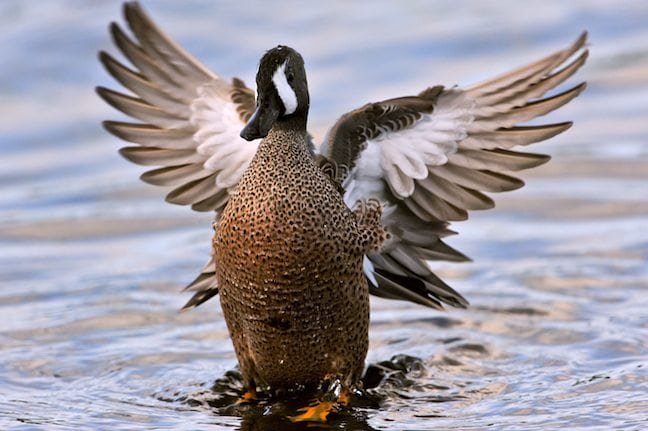
Blue-winged teal (Shutterstock image)
BLUE-WINGED TEAL
Bluewings are mainstay ducks throughout the first couple of weeks of our Minnesota season. Plentiful birds combine with mild conditions to make bluewings common on duck straps. The count varies by year, but 70,000 to 85,000 represents a typical annual bluewing bag.
When Minnesota’s duck opener moved up from the first Saturday in October to the third Saturday in September, in 2013, our blue-winged teal harvest really jumped.
Bluewings will tolerate a little cold, but not much. A few flirts with frost sends resident birds south. But they are soon replaced by migrants from points north. The first wave of teal on Minnesota duck straps usually are hens and young of the year; drakes come through later. But it’s always challenging to tell the sexes apart, as the ducks don’t molt into their breeding plumage until much later.
Blue-winged teal prefer small water. The hunter hoping for a teal dinner should concentrate on pockets, potholes, openings and forgotten corners within larger marsh complexes. Farm ponds, dugouts and ditches are prime teal places.
Use a simple setup. The classic two-pods-of-decoys plan, with you situated at an inviting landing zone in the middle, is an effective bluewing tactic. It’s fun to use blue-winged teal decoys, but hen mallard blocks work great; teal trust wary mallards.
A mallard call will work on teal. But I like a little teal call on the lanyard too, to make the nasal little quacks that bluewings typically use to indicate calmness and happiness.
While you will find bluewings across our state, bird numbers increase as you head west into prairie country. Bluewings nest there, and ducks from North Dakota, Manitoba and even Saskatchewan swing through on their way toward the Mississippi River and points south.
Waterfowl Production Areas in our west-central counties offer some prime blue-winged teal hunting. If you’re willing to paddle, wade, or hike to remote spots, you’ll have good shooting. Look to Pope, Stevens, western Grant, Traverse, Big Stone and Lac Qui Parle counties.
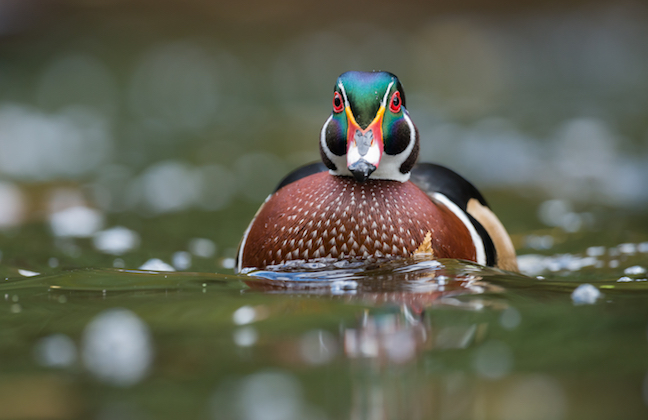
Wood duck (Shutterstock image)
WOOD DUCKS
Everybody loves wood ducks, and it’s no wonder. They’re beautiful to behold, delicious to eat, abundant in Minnesota, and fun to hunt. The whistles and weeeek weeeek squeals of wood ducks in the sky represent early season duck hunting at its finest.
Wood ducks compete with mallards for the most common duck found on Minnesota duck straps annually. Typical wood duck harvest counts range from 115,000 to 130,000 annually. Woodies do better and better as the years pass; much of that can be tracked back to nesting success due to wood duck boxes.
Many of our wood ducks are home-grown. These are the ducks we’re shooting during the season’s first week or two. When the resident birds are pushed out by a little shooting pressure, plus some deep frost, a second wave of woodies from the north often travels southward across the state during the first couple of weeks of October.
You may have the opportunity to take a drake in its full breeding splendor. There’s nothing like the green, purple, burgundy bronze and cream feather scheme — all elegantly patterned — on a male wood duck. Even the hens are daintily painted, with an autumn-green shimmer to their grays, a creamy belly, and a distinct white eye ring.
Wood ducks are shot across Minnesota, but some of the best hunting happens where trees are present. You can find woodies in prairie country, but the woods-prairie transition zone is better. Small water is preferable, as is proximity to brush and other cover.
Two regions of the state come to mind for woodies. Look to wildlife management areas in the Stearns, Morrison, Wadena, Todd and Hubbard and Becker County corridor. The Mississippi River bottoms, from Hastings on down to Wabasha and Winona, are also hotbeds for wood duck hatching and migration. There is good access, but you will need a duck boat or vessel of some type there.
Setting up for wood ducks is simple. Toss out a dozen or so decoys, scattered randomly throughout a hole, with many of the decoys near cover on the edge (where wood ducks like to be) and a few in the middle. Use a wood duck squealer/whistle call, or gain attention with mallard quacks.
REDHEAD REWARDS
The earliest diving duck of all to hit the migration trail through Minnesota is the redhead. Though we only shoot 20,000 to 25,000 of these handsome ducks a year, redheads are highly prized for their elegant look — second only to their cousin the canvasback — and superb taste on the table, which is second to none! We do harbor a breeding population of redheads in the state, but these tropics-loving birds migrate exceptionally early, and the season’s first two weeks are prime times to shoot one.
—Tom Carpenter
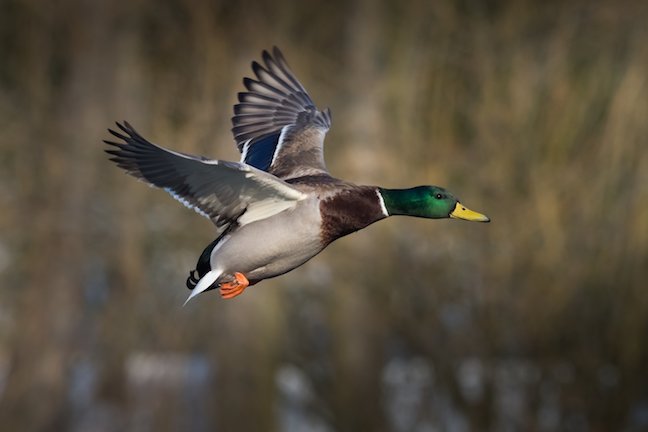
Mallard duck (Shutterstock image)
MALLARDS
What would Minnesota duck hunting be without mallards? Mallards typically lead our duck harvest, with anywhere from 130,000 to 170,000 birds per year. While late-season hunting for migrating mallards is popular, it is more hit-or-miss than hunting the resident birds of the early season.
Minnesota hatches plenty of mallards, and the more grass there is on the ground, the better. That makes two places prime for early mallards: the far northwest (Marshall, Kittson and Roseau counties), where cattle operations and hence pasture ground are more common; and the west-central counties already mentioned for blue-wings, along with WMAs in the southwestern counties of Lincoln, Lyon, Pipestone and Murray.
But the ever-adaptable mallard ends up on duck straps everywhere across the state, and every early season hunter needs to be ready for greenheads. It’s challenging to pick out a drake early in the season, so hold off on shooting until the birds are practically on top of you, with wings set, before pulling up and going for one with a speckled-green head or yellow bill.
Mallards are wary any time of the season, and the first few weeks are no exception. In fact, once local birds are pressured a little bit, they get mighty edgy and shy mighty fast. Complete concealment is key, as is judicious calling, or maybe not calling at all and just letting your decoys do their job.
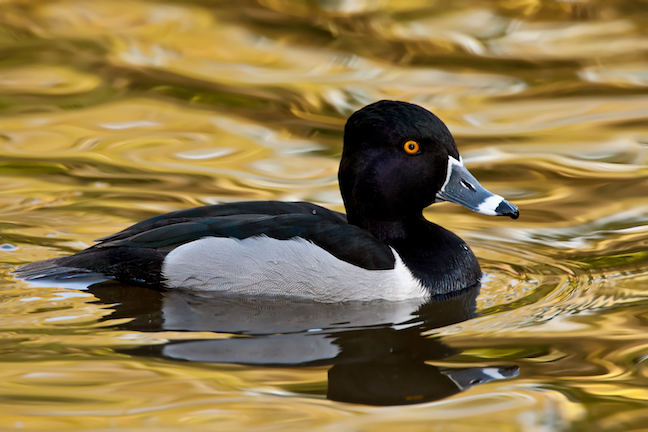
Shutterstock image
RINGBILLS
Ring-necked ducks are a Minnesota staple. Even when bluebills were king here, it was ringbills that kept diver hunters happy and occupied during the first few weeks of the season, before the northern scaup were pushed south by wintery conditions.
Ringbill harvest hovers in the 65,000-bird range each year in Minnesota. Ringbills are by far the most common diving duck appearing on our duck straps.
Most folks think of diving ducks as residents of the big water. But ringbills break that mold. They are citizens of small water. We have a breeding population in Minnesota, generally in the northcentral and northeastern parts of the state. But we also see excellent migration activity as ducks migrate through during the first couple of weeks of October.
Ringbills also break the traditional diver mold with an early migration habit. Two factors attract those early season ringbills: our abundant small water, and good vegetation. Unlike other divers, ringbills are primarily eaters of plant matter. The birds prefer shallow water, and feeding on pondweed, sedges and smartweed.
But wild rice beats it all. Ringbills love the stuff! That simple fact will guide you to good places to hunt. Though ringbills are shot everywhere in Minnesota, the central and northern wooded zone (wild rice country) comprises prime ringbill range. Think Mille Lacs, Crow Wing, Aitkin, Cass, Kanabec and Pine counties.
The Rice Lake National Wildlife Refuge in Aitkin County and the Thief Lake WMA (Beltrami, Marshall and Roseau counties) are prime ringbill destinations.
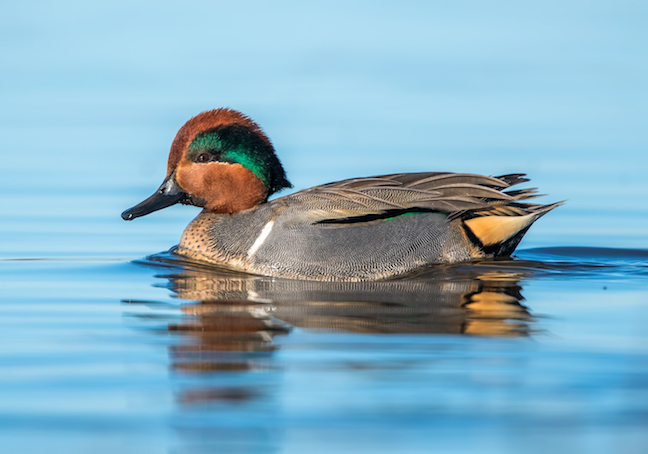
Green-winged teal (Shutterstock image)
GREEN-WINGED TEAL
It’s hard to say which duck would win a beauty contest — a drake wood duck or a green-winged teal. Certainly the woody would take first prize for sheer gaudiness. But a male greenwing in full plume — chestnut-red head, green eye-stripe, pink-brown chest with speckles, creamy belly and elegant herringbone flanks — gives that wood duck a run for its money.
Though related to blue-winged teal, greenwings really are their own little bird. And little they are — our smallest duck by far, averaging 3/4 of a pound for most specimens, with a 1-pounder tops. But what they lack in size they make up for in action and abundance.
Greenwings fly in a twisting and turning manner, continually trading places in a zooming flock as it buzzes a decoy spread. The birds always seem to be here or there while your shot string flies there or here! Our annual greenwing harvest runs in the 30,000 to 40,000 range, making this species a staple on duck straps and blind hooks.
Despite their tiny size, green-winged teal are hardier than bluewings, and greenwings usually don’t show up in numbers until the season is a couple of weeks old. That’s good for hunting, as the timing often coincides with when the bluewings start becoming scarce. Though some greenwings nest in Minnesota, most of our birds are hatched farther north and west, in the potholes of Canada’s boreal forest.
It’s counter-intuitive that green-winged teal, despite their tiny size, are more of a big-water bird than are bluewings. Out-of-the-way holes can attract birds, but they seem to prefer points, passes and funnel squeeze spots out on the big water — areas more commonly associated with divers.
Invariably, though, greenwings are true puddle feeders, preferring the shallowest water (under a foot) at mealtime. Autumns with a lot of rainfall to flood fields and marsh margins make for great greenwing hunting.
I have a little set of green-winged teal decoys that I love to use to lure ducks in. A green-winged teal whistle makes a good call. But your traditional mallard setup can work too.
Across the state, greenwings are where you find them. I’ve shot them on wood duck sloughs in the Metro, on potholes in the North Country, and on diver sets on our biggest duck lakes.
To target green-winged teal, head to our southwestern marshes in October’s second and third weeks. The western tier of counties is also prime, particularly larger marsh complexes such as the 11,521-acre Big Stone NWR in Big Stone and Lac Qui Parle counties, and the 24,300-acre Lac Qui Parle WMA in Lac Qui Parle, Swift, Chippewa and Big Stone counties.
The post 5 Early Season Targets for Duck Hunting appeared first on Game & Fish.













